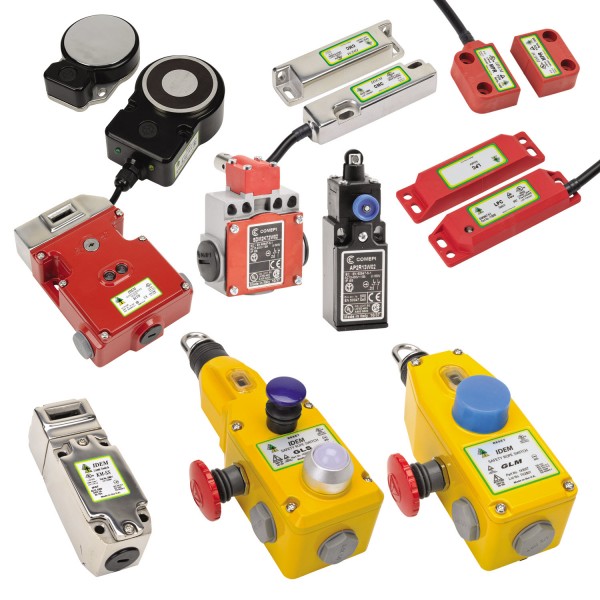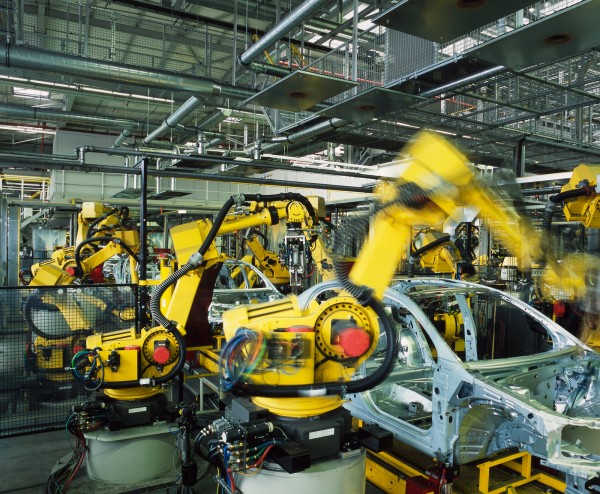You’ve probably seen some seemingly well-designed machines rendered unsafe because plant operators disabled safety switches. I know I’ve encountered such situations, and it’s our responsibility as engineers and designers to address this issue by making safety switches very difficult to disable, or by making their operation such that they don’t unduly hinder production.
Machine operators need to be protected by controlling their access to automated equipment such that they can only get in through properly interlocked doors and other access points. To pull this off in such a way as to discourage switch disablement, safety switches are available in a variety of mechanical options. But before we get into the juicy details of switch types and deployment options, here’s a public service announcement concerning applicable machine safety standards:
- 29 CFR 1910.212, Occupational Safety and Health Standards, Machinery and Machine Guarding, General Requirements for all Machines
- ANSI/NFPA 79-1991, Electrical Standard for Industrial Machinery
- ANSI/RIA R15.06-1986, Industrial Robots and Robot Systems
- ISO 13849-1, protection level up to PLe depending upon system architecture
- EN 62061, protection level up to SIL3 depending upon system architecture
To summarize, this alphabet soup of specs says machine guarding shall be provided to protect the operator and other employees in the machine area from hazards created by point-of-operation, pinch points, rotating machinery, flying debris and sparks.
Barrier guards with gates and doors are commonly used to provide this protection, and safety switches are used to confirm whether they are closed or open.
On Guard!
A variety of safety switches can be used on guard doors. Switch contacts are connected to a safety controller (safety relay, safety programmable relay or safety-rated PLC) as inputs, and the safety controller’s outputs remove power or air from motion-causing devices such as motors, solenoids and pneumatic actuators when the switch trips.

With a tongue interlock safety switch, a door-mounted key mechanically engages and actuates the switch when the door is shut. Locking tongue guard switches are similar, but utilize a spring and solenoid and can thus be configured to unlock/release the tongue when energized or de-energized. Hinge interlock switches are another option for indicating door position.
A cable pull switch monitors the tension on a cable stretched along an open machine or conveyor, and the switch activates when the cable is pulled or if it breaks. Safety limit switches protect machines by detecting drift or over travel and are comprised of levers, rockers, plungers and rollers.
These are all contact safety switches with mechanical interlocks, and non-contact switches are another option.
No Contact Allowed
Non-contact safety switches have the following advantages over mechanically interlocked safety switches:
- Reduced wear
- More tolerant to guard door misalignment
- Excellent resistance to contamination
- Longer service life
- Higher level of protection
- Simpler installation
- Smaller size
Non-contact switches can’t mechanically lock a door, but can be provided with electromagnets supplying up to 1500N of force to hold a door closed. Here are some non-contact switch types.
Hard to Disable
Non-coded switches are simple magnets, while coded switches can be magnetic- or RFID- coded. With a non-coded switch, a magnet actuator closes the switch’s dry contacts.
Coded non-contact switches need a power feed, which they use to provide a digital output, local LED indication, and increased levels of detection if someone tries to defeat the switch. With a coded non-contact magnetic switch, a series of magnets have poles placed in a particular pattern, and thus can’t be defeated by a generic magnet.
RFID-coded switches are even harder to disable, as the actuator has an RFID tag which the switch is programmed to detect. Master-coded switches detect all RFID tags, and uniquely-coded switches detect only one tag.
For more information, including an exciting example showing how to guard this robotic work cell, please see the article Safety Switch Types and Applications in the June 2015 issue of Design World magazine. The article was authored by Andrew Waugh, the Product Manager for Sensors and Safety at AutomationDirect.



